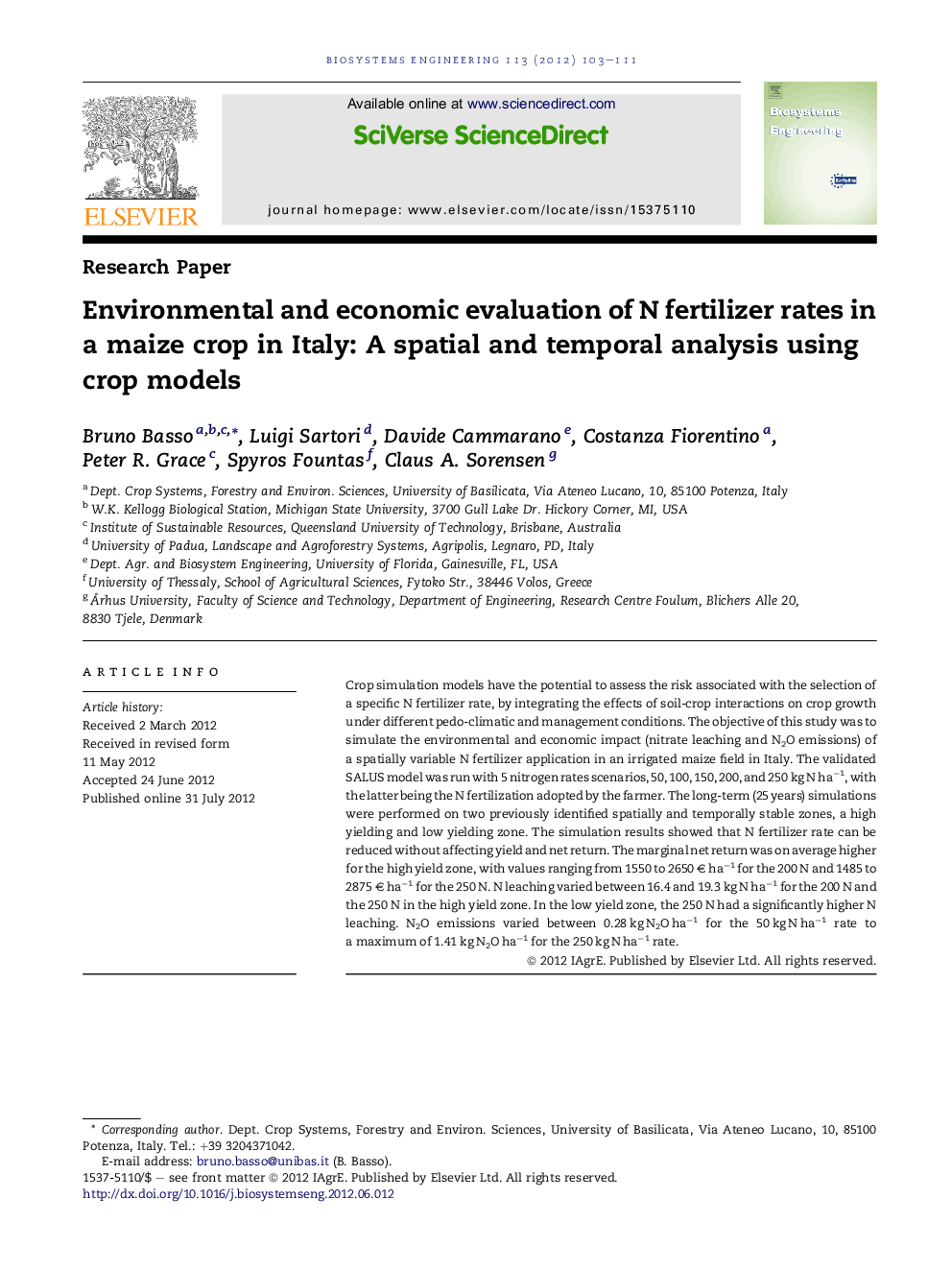| Article ID | Journal | Published Year | Pages | File Type |
|---|---|---|---|---|
| 1711451 | Biosystems Engineering | 2012 | 9 Pages |
Crop simulation models have the potential to assess the risk associated with the selection of a specific N fertilizer rate, by integrating the effects of soil-crop interactions on crop growth under different pedo-climatic and management conditions. The objective of this study was to simulate the environmental and economic impact (nitrate leaching and N2O emissions) of a spatially variable N fertilizer application in an irrigated maize field in Italy. The validated SALUS model was run with 5 nitrogen rates scenarios, 50, 100, 150, 200, and 250 kg N ha−1, with the latter being the N fertilization adopted by the farmer. The long-term (25 years) simulations were performed on two previously identified spatially and temporally stable zones, a high yielding and low yielding zone. The simulation results showed that N fertilizer rate can be reduced without affecting yield and net return. The marginal net return was on average higher for the high yield zone, with values ranging from 1550 to 2650 € ha−1 for the 200 N and 1485 to 2875 € ha−1 for the 250 N. N leaching varied between 16.4 and 19.3 kg N ha−1 for the 200 N and the 250 N in the high yield zone. In the low yield zone, the 250 N had a significantly higher N leaching. N2O emissions varied between 0.28 kg N2O ha−1 for the 50 kg N ha−1 rate to a maximum of 1.41 kg N2O ha−1 for the 250 kg N ha−1 rate.
► The best amount of N fertilizer to apply on a field varies spatially and temporally. ► A crop simulation model was used to select optimal N rate over space and time. ► Net marginal return increased using the N rate chosen by model. ► N leaching and N2O emission were reduced with the N rate selected by the model.
